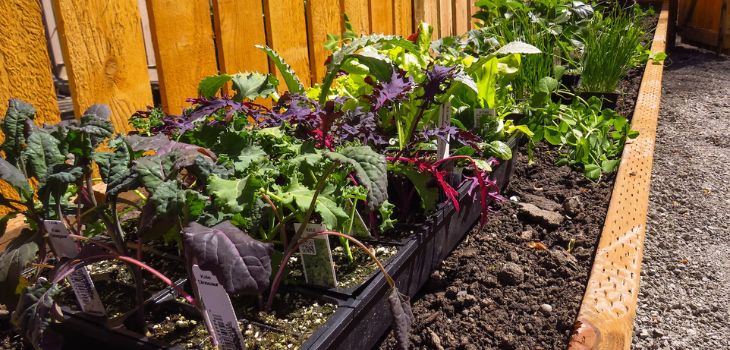Wood and metal are two common materials used for constructing garden beds. Each material has its own advantages and disadvantages, and the choice between them depends on your specific needs and preferences. Here’s a comparison of wood and metal garden beds:
Wooden Garden Beds:
- Natural Aesthetic: Wood is often chosen for its natural and rustic appearance, which can blend well with garden surroundings.
- Insulation: Wood provides better insulation for plant roots, helping to maintain a more stable soil temperature.
- DIY-Friendly: Wood is relatively easy to work with, making it a good option for DIY garden bed construction.
- Variety of Wood Choices: You can choose from various types of wood, such as cedar or redwood, which are naturally rot-resistant, or pressure-treated wood for increased longevity.
- Biodegradable: Wood is biodegradable and can be a more environmentally friendly choice.
Drawbacks of Wooden Garden Beds:
- Rot and Decay: Wood is susceptible to rot and decay over time, especially if not properly maintained or if exposed to moisture.
- Maintenance: Wooden garden beds may require periodic staining or sealing to extend their lifespan.
- Cost: High-quality, rot-resistant wood can be more expensive than some metal options.

Metal Garden Beds:
- Durability: Metal garden beds, typically made of steel or galvanized steel, are highly durable and can last for many years without rotting or decaying.
- Strength: Metal beds are sturdy and can withstand pressure from soil and plant roots.
- Easy Assembly: They are often designed for easy assembly and installation.
- Pest Resistance: Metal beds are less susceptible to pest infestations compared to wood.
- Space-Saving: Metal beds can be designed with thinner walls, which can maximize growing space.
Drawbacks of Metal Garden Beds:
- Heat Retention: Metal can absorb and retain heat, which may cause soil to become warmer than desired, especially in hot climates.
- Aesthetics: Some people prefer the natural look of wood, and metal beds can appear more industrial.
- Limited Insulation: Metal does not insulate as well as wood, which can lead to more temperature fluctuations in the soil.
- Potential Rust: Over time, metal beds may develop rust, although galvanized steel is more resistant to this.
Conclusion
In summary, the choice between wood and metal garden beds depends on factors like your aesthetic preferences, budget, local climate, and the specific needs of your garden. If you prioritize durability and low maintenance, metal beds might be the better choice. For a more natural look and better insulation, wood could be the way to go. Ultimately, both materials can be suitable for gardening, so consider your priorities and local conditions when making your decision.
